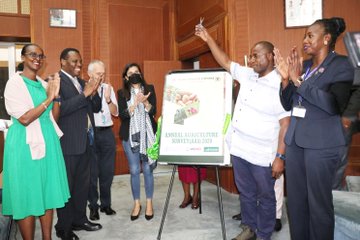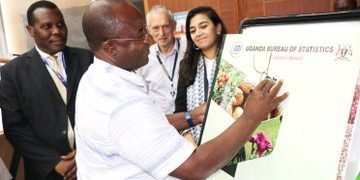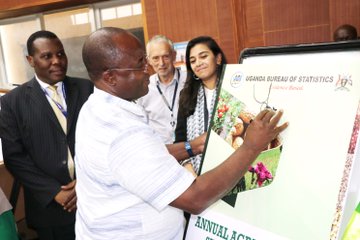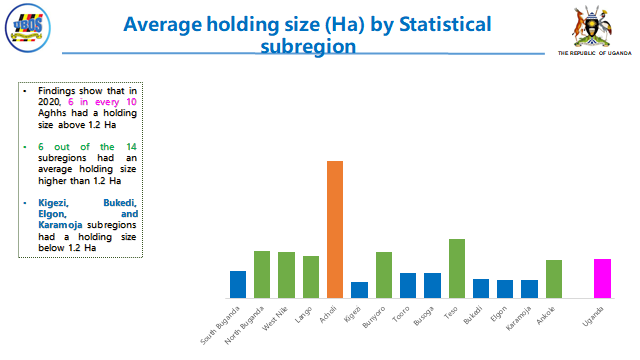Uganda Bureau of Statistics (UBOS) Friday launched the Annual Agricultural Survey Report 2020 at Statistics House in Kampala.
The launch concluded the week-long activities marking Africa Statistics Day and running under the theme: “Strengthening data systems by modernizing the production and use of agricultural statistics: informing policies to improve resilience in agriculture, nutrition, and food security in Africa.”
Speaking at the event, UBOS Deputy Executive Director, Godfrey Nabongo, said recognised the contribution of the Food and Agriculture Organisation (FAO), the World Bank and USAID for investing a lot in the survey.
“We will support all stakeholders to bridge existent data gaps and with this report, Agricultural gaps will be substantially addressed,” he stated, adding: “We believe these results will guide policy decisions.”
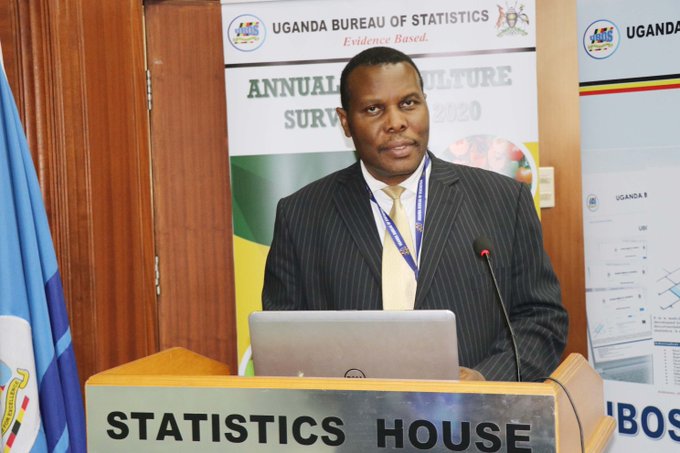
Nabongo also promised timely population results next year since the bureau is, this time round, going digital in its enumeration process.
“Thanks to the government for approving the National Census for August 2023, we promise that the results will come out in two months,” he pointed out.
Findings
The findings of the survey report presented by Nabukalu Diana, a Senior Statistician at UBOS, indicated that 77% of Agricultural Households are headed by males. Most sub-regions had over 70% of their Agricultural Household heads as males except Karamoja (65%).
About 69% of Agricultural Household heads are literate, that is; 4 in every 10 female Agricultural Household heads are literate and 8 in every 10 male Agric Household heads are literate.
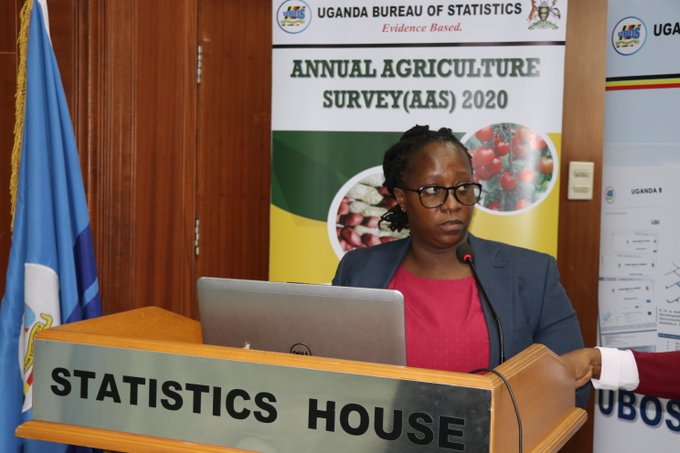
South Buganda (83%) had the highest, Kigezi (78%), Acholi (76%) and Karamoja (21%) had the least.
At the national level, most Agricultural household heads (56%) had attained primary education compared to other levels.
Sex analysis: More female Agricultural household heads (35%) had no education compared to their male counterparts (9%).
Overall, 76% of Agricultural Household heads are engaged in agriculture as their main economic activity. Teso subregion had the highest of 92%, West Nile at 90% and South Buganda at 57% had the least in the category.
About 60% of Agricultural households had a holding size above 1.2 Hectares. 6 out of the 14 sub-regions had an average holding size higher than 1.2 Ha. Kigezi, Bukedi, Elgon, and Karamoja subregions had a holding size below 1.2 Ha.
In 2020, 14% of Agricultural households received extension services compared to 5% in 2019. 1.9% of Agricultural households paid for extension services in 2020 while 44% mainly received extension services from the Local Government.
On maize production and productivity, the survey also found that maize is cultivated by 55% of Uganda’s agricultural households; the highest producers are Buganda North followed by Bunyoro, among others.
Agriculture cannot be underrated
In her opening remarks, Kauda Aliziki Lubega, the Director of Economic Statistics at UBOS, said 88% of the households in the country are engaged in agriculture (47% urban and 96% rural).
“Agriculture contributed to 24.1% of the overall Gross Domestic Product (GDP) in the year ending 2021/22. The sector also recorded a growth of 4.4% in 2021/22,” she revealed.
FAO Deputy Country Representative, Priya Gujadhur, said agriculture has the potential to increase people’s income, create jobs and alleviate poverty and the UN agency’s collaboration is still on until 2024.
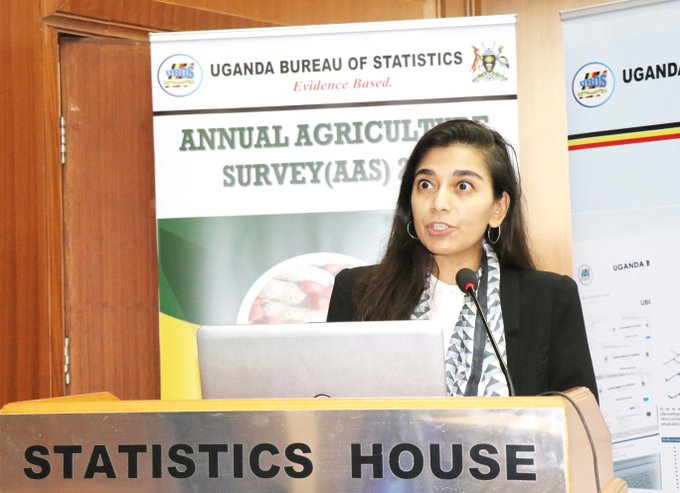
“It also contributes to environmental conservation, climatic change and feeding the population. Agricultural information addresses emerging data requirements and informs the Third National Development Plan (NDPIII).”
According to her, the availability of quality Agricultural data bridges the gaps as it highlights where to improve. She noted that the survey design was rethought due to COVID-19.
While launching the survey report, the Minister of State for Agriculture, Animal Industry and Fisheries, Hon. Kyakulaga Fred Bwino MP said the NRM government does not rely on hearsay while planning for this nation but rather premises its programmes on evidence, which evidence is provided by the statistics available from UBOS.
“I am glad to be in this hall because it draws memories. I worked with UBOS as an enumerator in 1991,” he recalled.
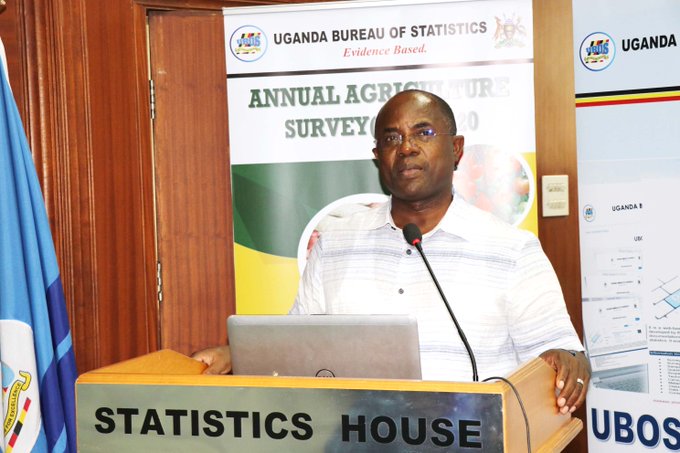
“What is that new thing that we can embrace for better Agricultural results, and what is there for us to modify and make better for the best outcomes? Such questions help us to reflect on what was, what is and what should be.”
According to the minister, Agriculture cannot be underrated and its data ought to be given up-hand consideration due to the economic contribution it gives, and the many people it impacts.
“The Parish Development Model (PDM) gives agriculture an upper hand. There is still a high proportion of the population dependent on subsistence agriculture, the majority are rural women and youth.”
He said Agricultural production is constrained by limited access to Agricultural financial services and critical inputs.
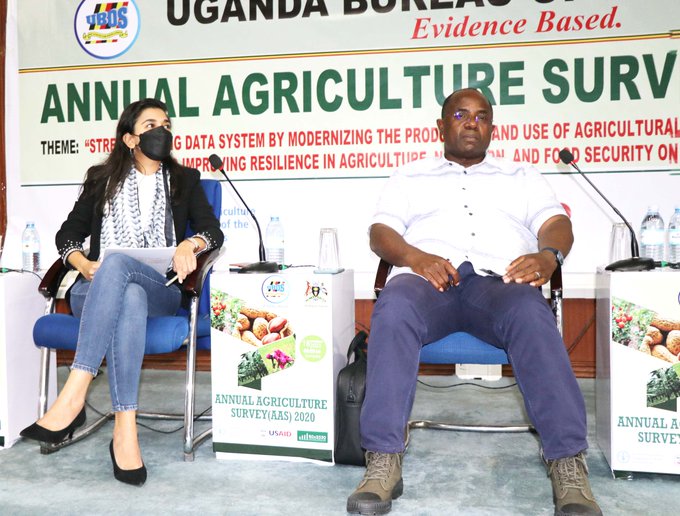
He said Uganda’s post-harvest losses range from 30% to 40% for grains and other staples, and 30% to 80% for fresh fruits and vegetables. “This is detrimental to our economy and urgent solutions need to be found.”
As a measure, he encouraged farmers to embrace modernisation to improve post-harvest handling and storage of agricultural commodities, in addition to employing modern grain processing equipment and cold chain facilities to counter losses.
“Agriculture is one of the areas that can not be under-estimated, therefore, this sector should be given special attention because it impacts very many people.”
He said the survey findings will help agricultural householders to understand the trends in the agriculture sector.
